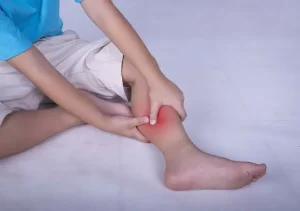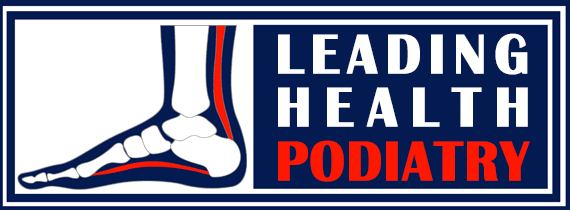Growing Pain in Kids
Growing pains in kids are a common, often misunderstood condition that causes discomfort in the legs. These pains typically occur in the muscles of the thighs, calves, or behind the knees, and are most prevalent during the early childhood years. While growing pains are not directly caused by growth itself, they often happen during times of rapid physical development. At Leading Health Podiatry, we specialize in diagnosing and treating growing pains, helping kids feel better and stay active.
What Are Growing Pains?
Growing pains in kids are typically described as an aching or throbbing sensation in the legs, usually occurring in the late afternoon or evening. These pains often affect both legs and are common in children between the ages of 3 and 12. Growing pains are usually not associated with any underlying medical conditions, but they can still cause distress and interfere with sleep. Understanding the causes of growing pains can help you manage your child’s discomfort.

Causes of Growing Pains
The exact cause of growing pains in kids is not fully understood, but several factors may contribute to their occurrence:
- Muscle Fatigue: Kids are often very active, running and playing throughout the day. The muscles may become fatigued, leading to aches and discomfort.
- Rapid Growth: While growing pains are not directly linked to growth, they often coincide with periods of rapid physical development, when muscles may feel tight or strained.
- Activity Level: Increased physical activity, especially intense sports or long periods of running, can trigger growing pains in kids.
- Posture and Alignment: Poor posture or alignment during physical activities may put extra strain on muscles, contributing to growing pains.
Symptoms of Growing Pains
Growing pains typically have specific characteristics, including:
- Pain in the Legs: The discomfort is most often felt in the muscles of the thighs, calves, or behind the knees, and it may occur in both legs at once.
- Evening or Night Pain: Growing pains often become more noticeable at night, potentially waking a child from sleep.
- Relief with Massage: Gentle massage or stretching of the legs can sometimes provide relief from growing pains.
- No Swelling or Redness: Unlike other conditions, growing pains don’t cause swelling or redness in the affected areas.
Diagnosing Growing Pains
At Leading Health Podiatry, we carefully evaluate your child’s symptoms to rule out other conditions that might be causing the pain. The diagnostic process for growing pains typically includes:
- Physical Examination: We will examine your child’s legs, joints, and muscles to check for signs of injury, swelling, or abnormalities.
- Review of Activity Level: Understanding your child’s daily physical activity can help us determine if overuse is contributing to the pain.
- Medical History: We will consider your child’s medical history to ensure that growing pains are the most likely cause of their discomfort.
Treatment for Growing Pains in Kids
While growing pains in kids are usually self-limiting and go away on their own over time, there are several ways to manage the discomfort and help your child feel more comfortable:
- Massage and Stretching: Gentle massage or stretching exercises can help relieve tight muscles and reduce pain associated with growing pains.
- Warm Compresses: Applying a warm compress to the affected area can help soothe aching muscles and provide temporary relief.
- Pain Relief Medication: Over-the-counter pain relievers, such as ibuprofen or acetaminophen, can be used to alleviate pain when necessary.
- Proper Footwear: Ensuring your child has supportive shoes can help prevent additional strain on the muscles and joints that may contribute to growing pains.
- Rest: Encouraging your child to take breaks from physical activity and get plenty of rest can help alleviate the symptoms of growing pains.
When to See a Podiatrist for Growing Pains
In most cases, growing pains don’t require medical intervention and will resolve on their own. However, if your child’s pain is persistent, severe, or accompanied by swelling, redness, or limping, it’s important to seek professional help. At Leading Health Podiatry, we are here to evaluate your child’s condition and offer guidance on managing growing pains or addressing any underlying issues that may be contributing to their discomfort.
Conclusion
Growing pains in kids can be a challenging experience for both children and parents, but with the right care and management, the discomfort can be alleviated. At Leading Health Podiatry, we are committed to helping your child navigate growing pains with effective treatments and expert advice. Contact us today to schedule an appointment and learn more about how we can support your child’s health and well-being during this stage of development.
